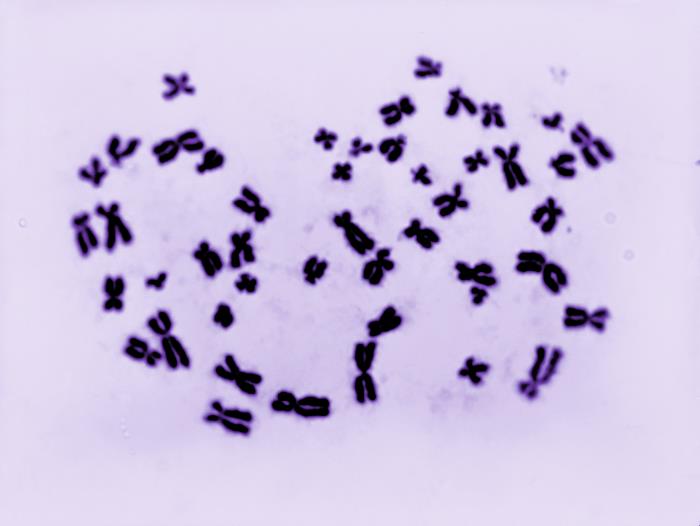GCSE Biology - AQA
2.2.3 - Chromosomes and Plasmids
Jump to:
Chromosomes and Plasmids
DNA comes in a variety of different forms. On this page we will look at two important types of DNA molecules: chromosomes and plasmids. Chromosomes are very large DNA molecules containing many genes. Plasmids are much smaller DNA molecules containing only a few genes.
Chromosomes are large DNA molecules
A chromosome is a very large DNA molecule. In some organisms the chromosomes are linear (a straight line with two ends). In other organisms they are circular (a loop).

Some organisms have linear chromosomes. Other organisms have circular chromosomes.
A chromosome is made up of a single very long DNA molecule, which is very highly coiled.
This DNA molecule usually contains hundreds or thousands of genes, each coding for a different protein.

A chromosome is a very large DNA molecule containing many genes. Each gene codes for a different protein.
A single gene can be thousands of base pairs long. Since a single chromosome can contain thousands of genes, and there are sections of chromosome in between the genes, a single chromosome can be many millions of base pairs long.
A chromosome is like a recipe book for proteins
Because a chromosome contains many genes, it allows the cell to make many different proteins.

Each gene in a chromosome codes for a different protein.
A chromosome is like a recipe book for proteins.
A real recipe book contains lots of recipes, which are instructions for making different meals.
A chromosome contains lots of genes, which are instructions for making different proteins.
In this recipe book analogy, the paper that the recipe book is made out of represents the DNA. This is because DNA is the material that the chromosome is made out of.
| Recipe book | Chromosome |
|---|---|
| Contains many recipes. | Contains many genes. |
| Each recipe is the instructions for making a particular meal. | Each gene is the instructions for making a particular protein. |
| The recipe book is made out of paper. | The chromosome is made out of DNA. |
After DNA replication, a linear chromosome is X-shaped
Before a cell divides, all of its DNA is copied. This is called DNA replication.
During DNA replication an identical copy of every chromosome is made. This identical copy remains attached to the original copy. If the original chromosome was linear then the structure that is formed looks like a letter X.
Even though this structure is made up of two DNA molecules, it is still called a chromosome. Therefore, during DNA replication the number of chromosomes does not change, but each chromosome becomes an X shape made up of two identical DNA molecules.

After DNA replication, each chromosome is an X shape, made up of two identical copies of the original chromosome.
When you see microscope images of chromosomes, they are usually images of chromosomes after DNA replication and therefore the chromosomes are usually X-shaped.

Microscope image of human chromosomes. They have been stained dark purple. Each chromosome is roughly X-shaped.
When the cell divides, the two copies are pulled apart and become separate chromosomes which go into different cells.
A plasmid is a small, circular DNA molecule
Plasmids are circular DNA molecules which are much smaller than chromosomes.
A plasmid usually only has a small number of genes (usually fewer than a hundred).

A plasmid is a small, circular DNA molecule containing a small number of genes.
(Note: Although most plasmids are circular, there are actually some that are linear. However you do not need to know this for the GCSE course. In your GCSE exams always say that plasmids are circular).
Flashcards
Flashcards help you memorise information quickly. Copy each question onto its own flashcard and then write the answer on the other side. Testing yourself on these regularly will enable you to learn much more quickly than just reading and making notes.
1/2
What is a chromosome?
2/2
What is a plasmid?
Next Page
2.2.4 - DNA in Eukaryotic and Prokaryotic Cells
Previous Page
2.2.2 - Genes
Return to course page
Donate
Please consider donating to support Mooramo. I am one person doing this whole project on my own - including building the site, writing the content, creating illustrations and making revision resources. By making a one-time or repeating donation you will buy me time to work on Mooramo, meaning that I can get new content on here more quickly.
Donate